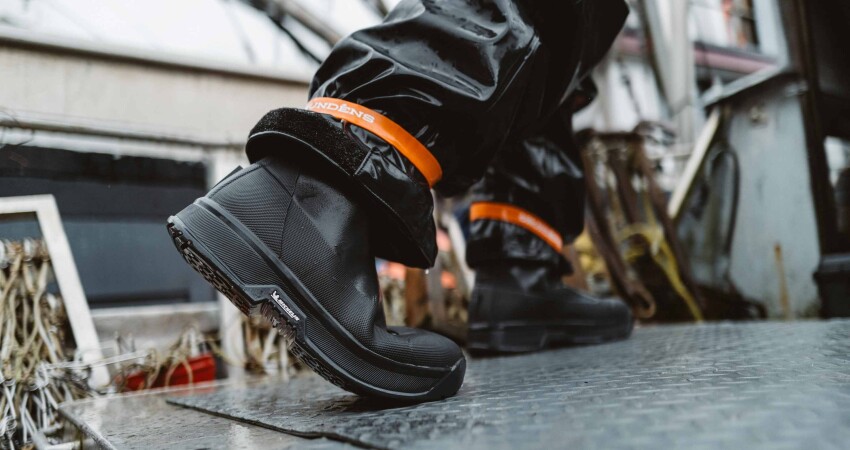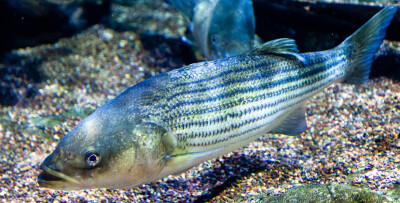The commercial fishing industry relies on good boots, and the boots keep getting better. Fishermen working long hours on exposed decks need comfort where they can find it, and that starts with their boots. The nature of the fishery, the season, and myriad other factors determine a fisherman’s choice of boots, and now more than ever, they have a lot of options.
Xtratuf boots, now under the ownership of Rocky Brands and part of the Honeywell corporate conglomerate, have earned their place at the top of the visibility chart. These boots, which have been a staple in Alaska and the Pacific Northwest for decades, are gradually gaining popularity in other regions, particularly New England. Xtratuf has also expanded its range to include a white shrimp boot for fishermen in the southeast and Gulf Coast, catering to their specific needs.
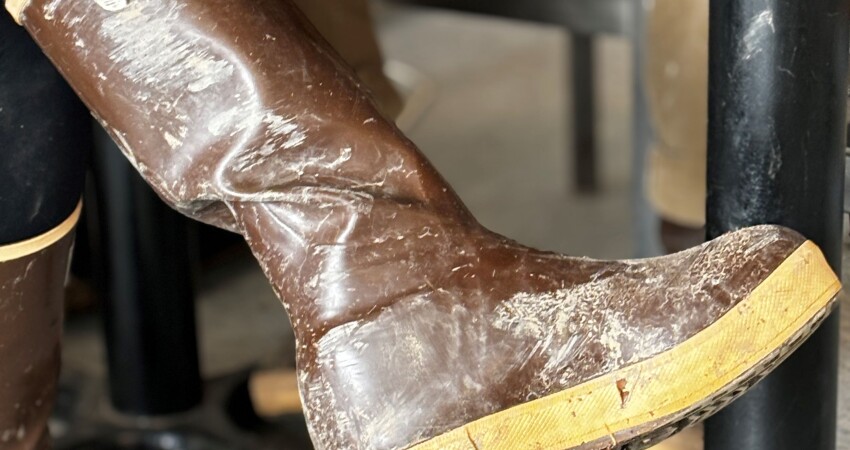
Originally manufactured in Rock Island, Illinois, by the BF Goodrich company in the 1950s, Xtratuf boots were known for their performance and durability. In 2008, Honeywell acquired the brand and made the strategic decision to shift manufacturing to China in 2011. While this move has been a point of contention for some fishermen, their loyalty to the Xtratuf brand remains unwavering.
“I've Worn Tuffs for years, and [they are] the staple of the commercial fishing industry. It's hard to beat the traction,” a comment on a boot thread on ifish.net read. “I’ll stick with Xtratuffs. I was a commercial fisherman for many years in Alaska, and they have saved me many times,” said another.
One does not have to go far to spot Xtratufs. A pair of young women in a portside café in Lubec, Maine, sport the classic brown boots. “They’re becoming trendy,” shared one. “My only complaint is that they don’t make insulated for women,” said the other. “So my feet are always cold.”
But while Xtratuf remains on top, other brands are working to take a share of the boot market.
Grundéns hopes to establish a more significant presence on deck by introducing its new Crewman boot, an upgrade of the Deck Boss, which has become increasingly popular. “We launched the Crewman on February 15th,” said global sales rep Aaron Azevedo. We tested it for nine months in Alaska and the Pacific Northwest, in the Canadian Maritimes and Maine, and in Europe, and we got a lot of good feedback on comfort and traction.”
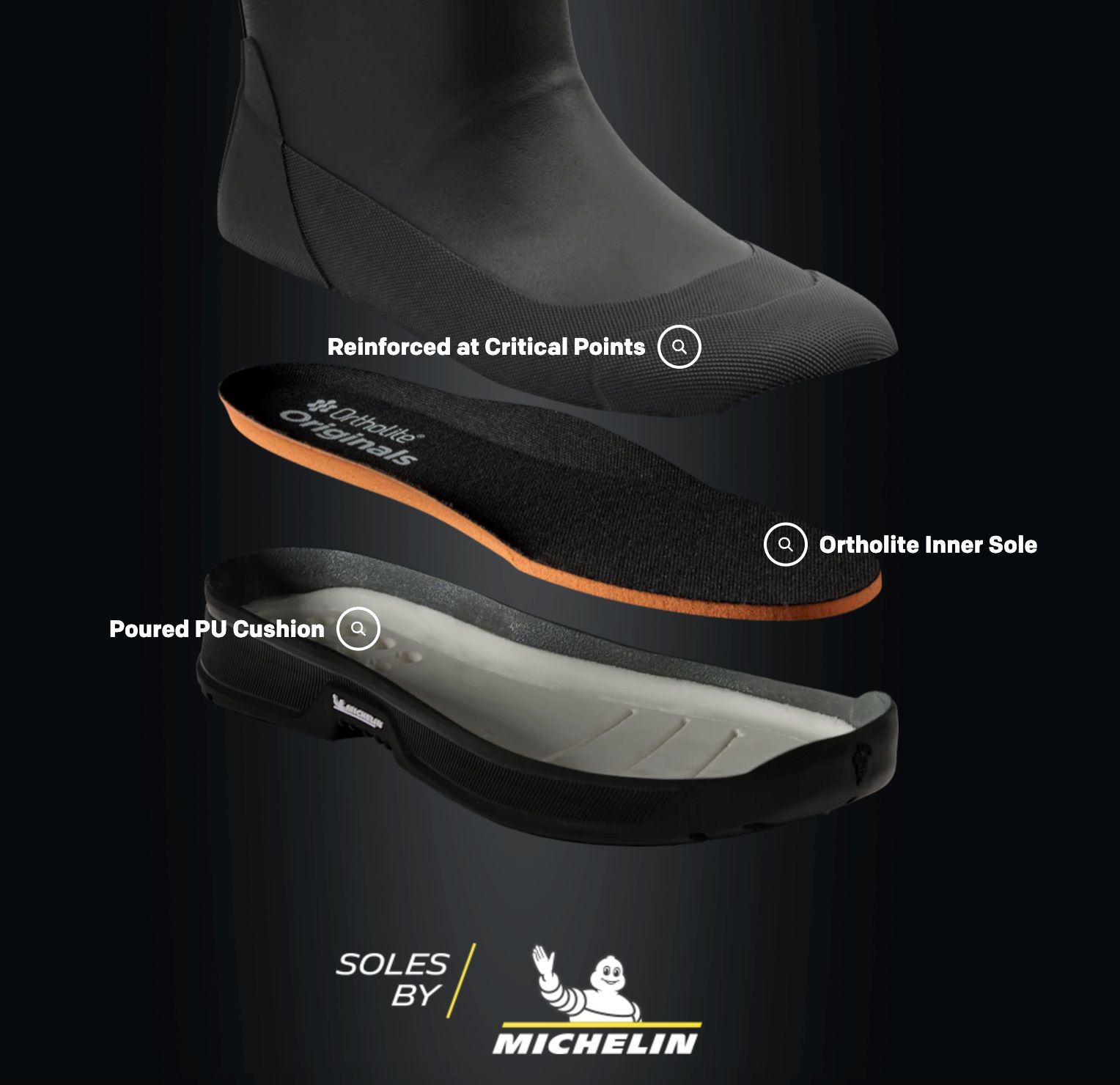
The key feature of the Crewman is the sole developed by Grundéns and Michelin. “The comfort comes from a full-length polyurethane midsole poured into the sole unit, which is made of a proprietary traction compound that we developed with Michelin,” Azevedo said. He notes that Michelin builds the soles, and then Grundéns assembles the boots. We added an Ortholite memory foam footbed, which is really comfortable.” For the comfortable footbed, Grundéns has neoprene-lined vulcanized rubber uppers. “We don’t have an insulated version yet,” said Azevedo. “But that’s coming next year.”
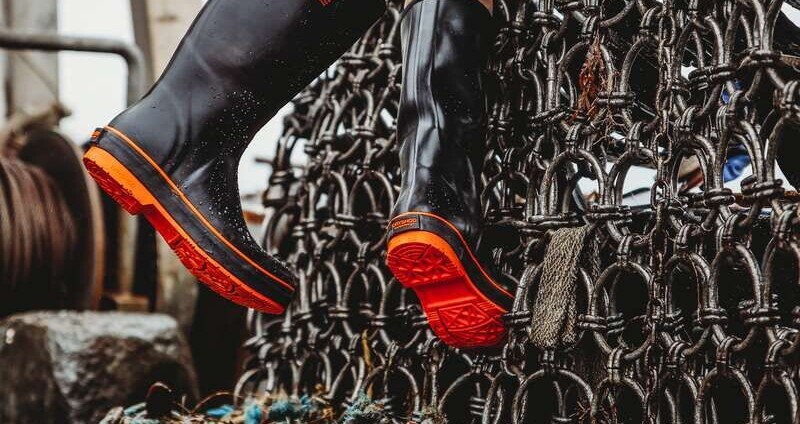
Several other brands are capturing shares of the market. For example, Dryshod boots push the brand’s Sea Monster and Mudslinger models at shows and around the docks. “There’s a lot of brand loyalty to our competition,” said Josh Lincoln, senior account manager at Dryshod. “It takes time to switch. The Sea Monster and Mudslinger are starting to capture some of the market. What we have now is a lightweight ankle boot, the Evolution line. They’re made with a Dureva sole, our newest compound, eliminating the need for a secondary rubber sole. They’re a pound lighter per pair than the Slipknot, which is the ankle version of the Sea Monster.”
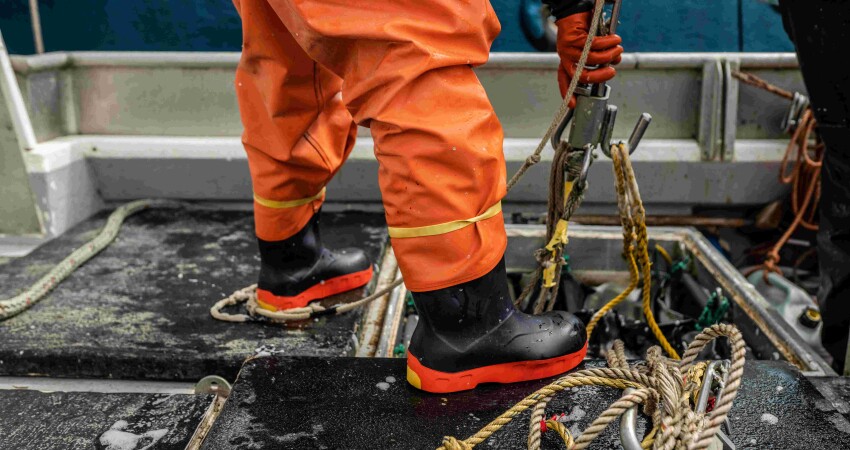
The Belgian company Bekina is making strides in the market, offering several options for commercial fishermen. “We are developing our local presence in the US market by servicing local clients from a warehouse in Chicago,” shared Schanna Capon, the company’s marketing and communication manager. At the heart of Bekina Boots' philosophy lies a commitment to sustainability and innovation. Our boots are made of Neotane, a high-quality polyurethane that makes them very strong and gives them a high thermal insulation value.”
Bekina advertises the Neotane boots as lighter and more durable than rubber or PVC boots. “All our boots available in the US are ASTM certified,” said Capon. “Our boots for fishing specifically are a top choice. They’re slip-resistant with SRC certification and have a wider shaft that does not pinch the calves.”
LaCrosse boots, once the mainstay on the Maine coast, have taken a backseat to other brands in recent years. But the classic black 16-inch ZXT boots continue to work well in areas where fishermen have to get in and out of skiffs along the shore‑‑and need the height to avoid a boot full of water. The LaCrosse ZXT also offers excellent support and traction for intertidal zone work such as clamming. “The newer Alpha lite pull-on weighs the same as the ZXT but is rubber over neoprene,” said the LaCrosse PR agent Justin Moore. “Definitely more comfortable to walk in.”
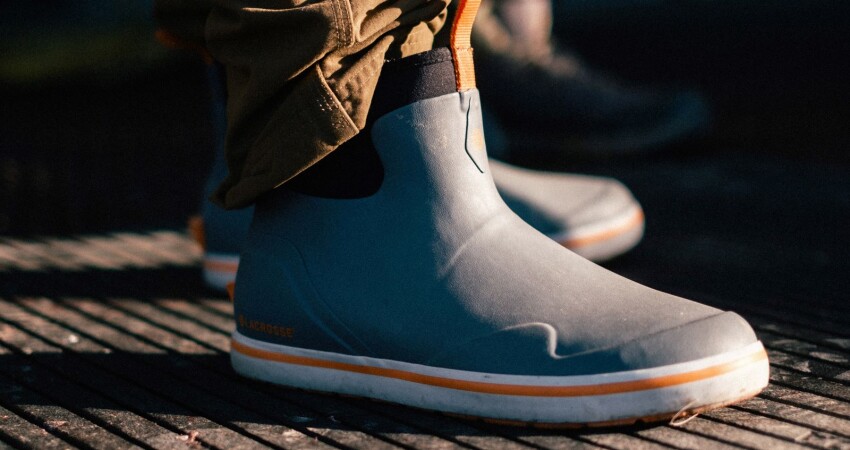
Moore is also excited about Lacrosse’s new Alpha Deck Boot. “They just came out last week. They’re a hand-laid rubber with neoprene around the top and a material called Air-circ on the inside; it’s a quick-drying mesh,” he said. “They’re super comfortable and weigh just 2.3 pounds per pair.”
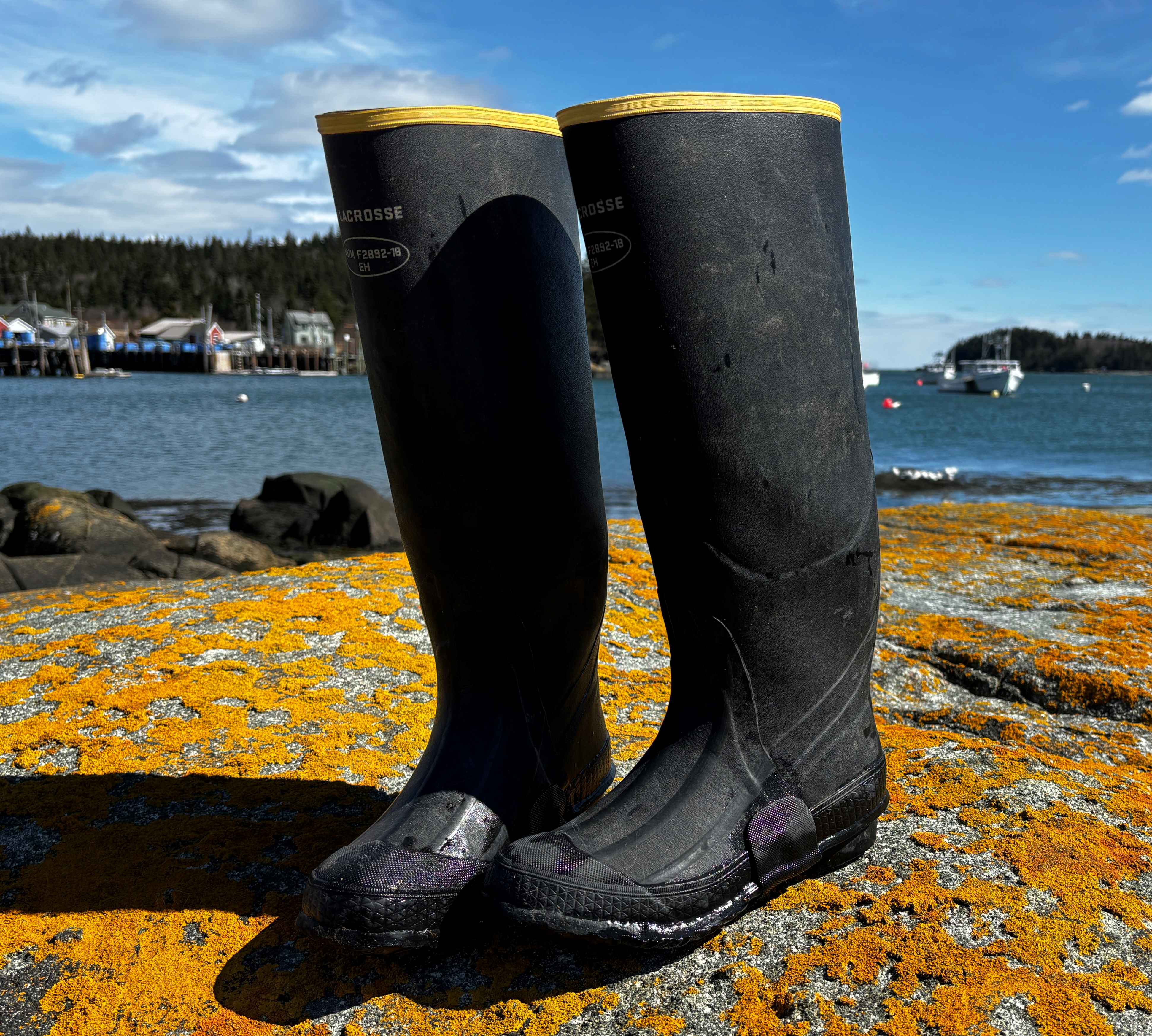
It seems that the options for footwear on deck are steadily growing, and fishermen looking to stay comfortable on deck are the winners in a competitive market.





